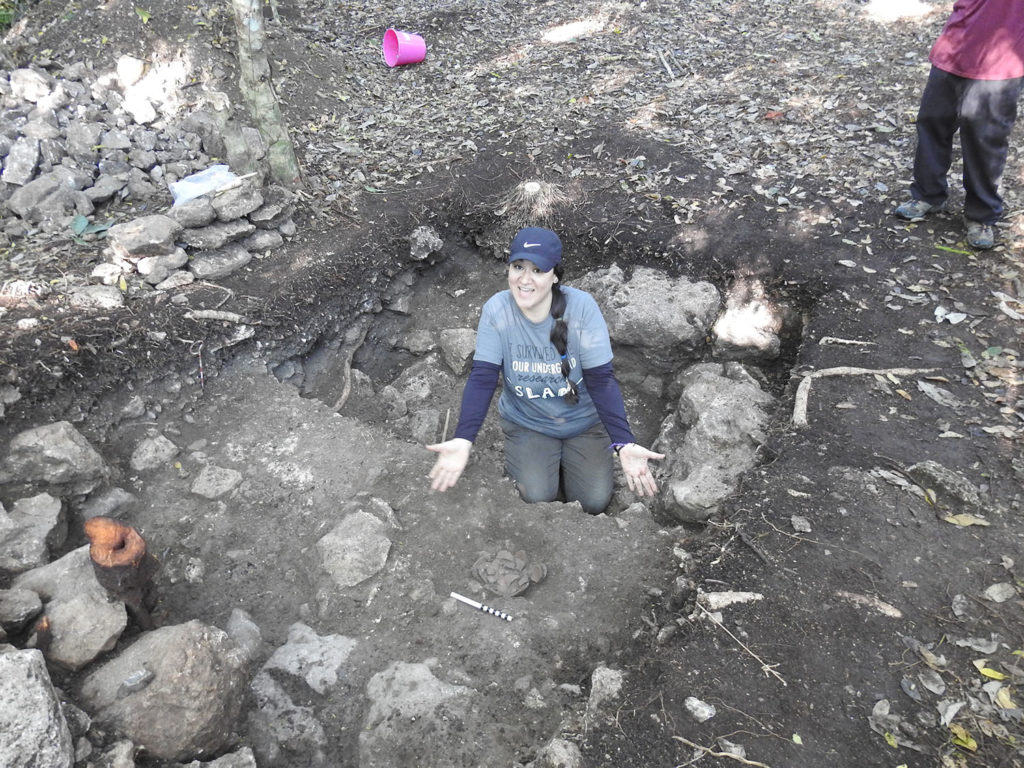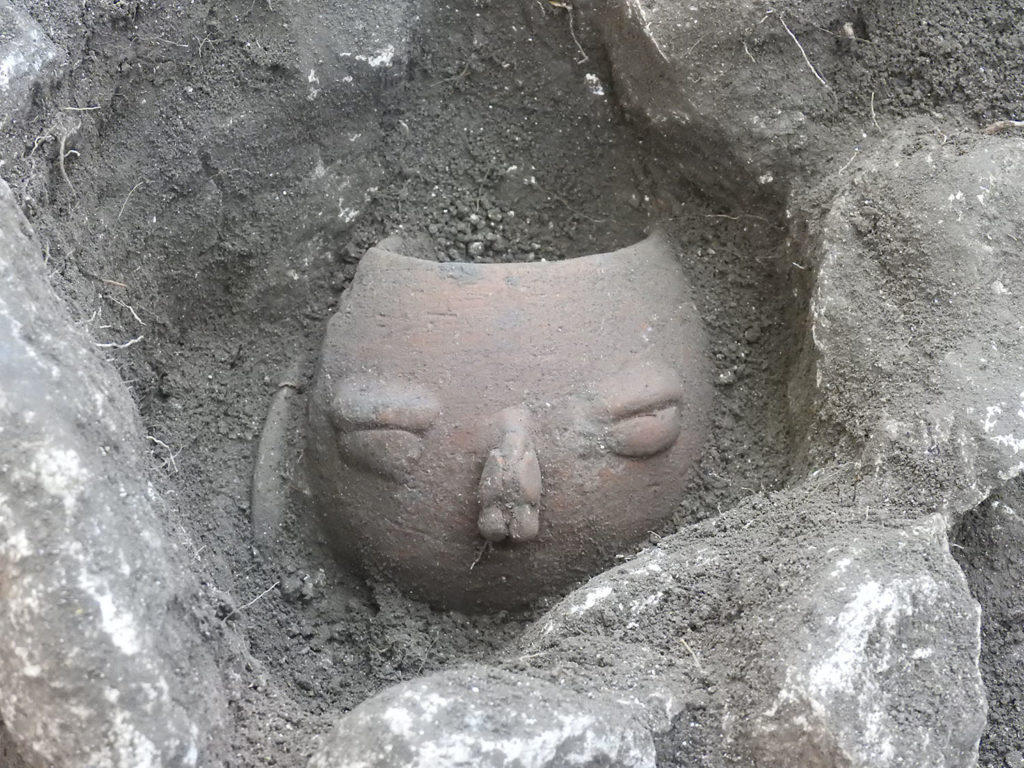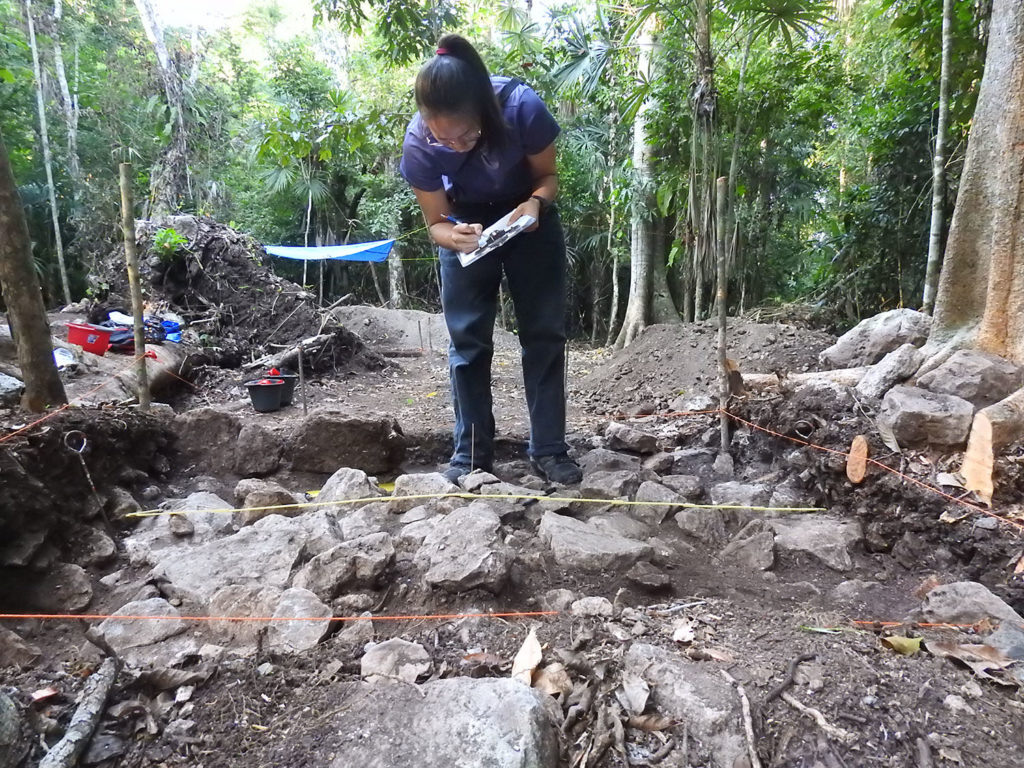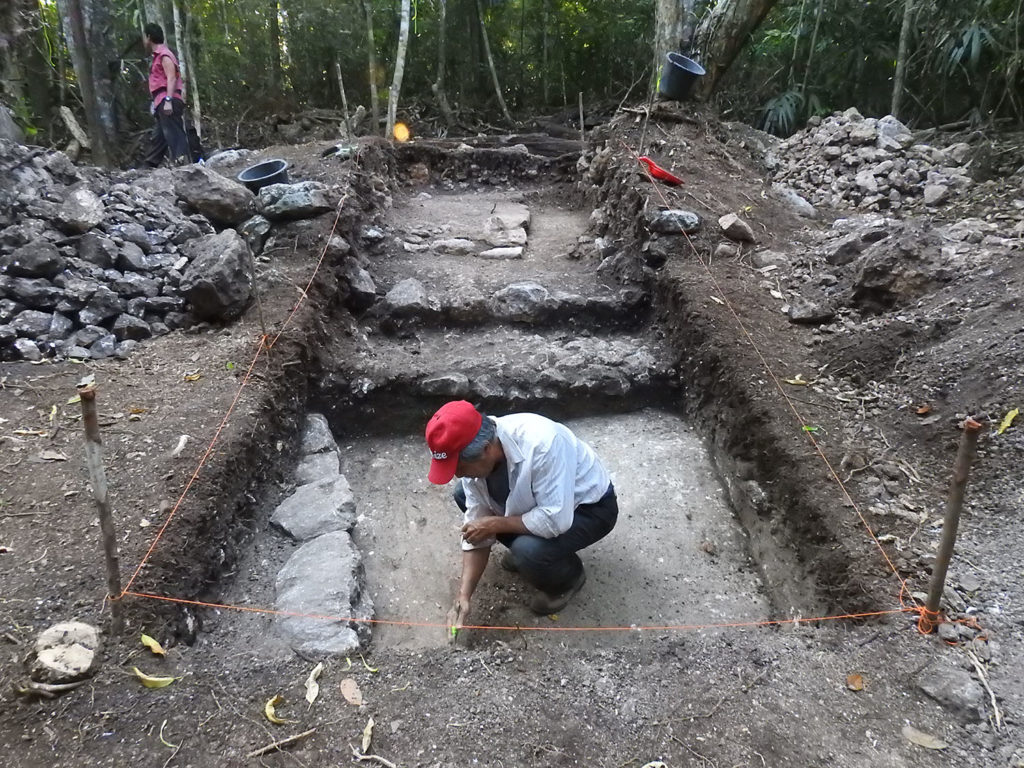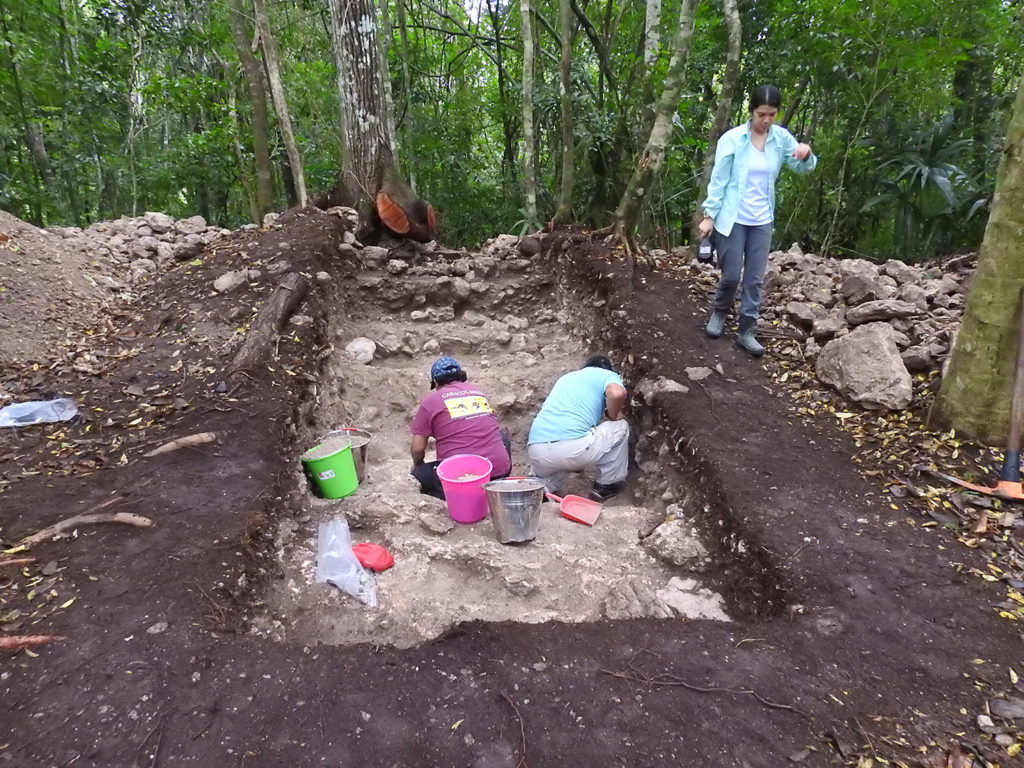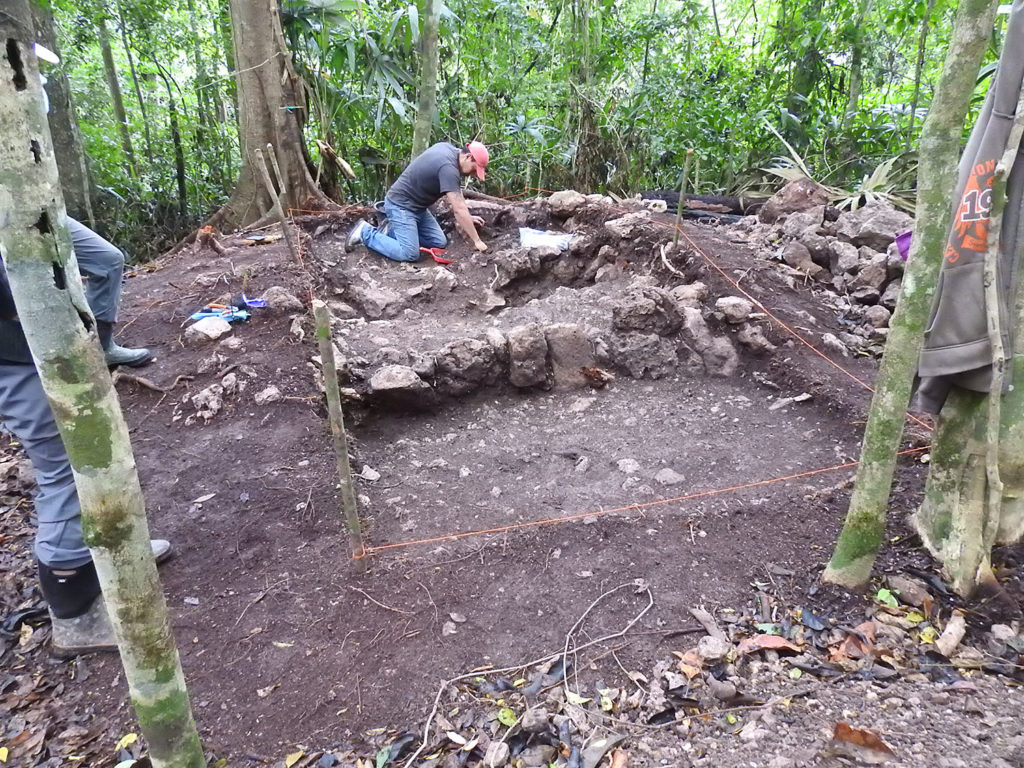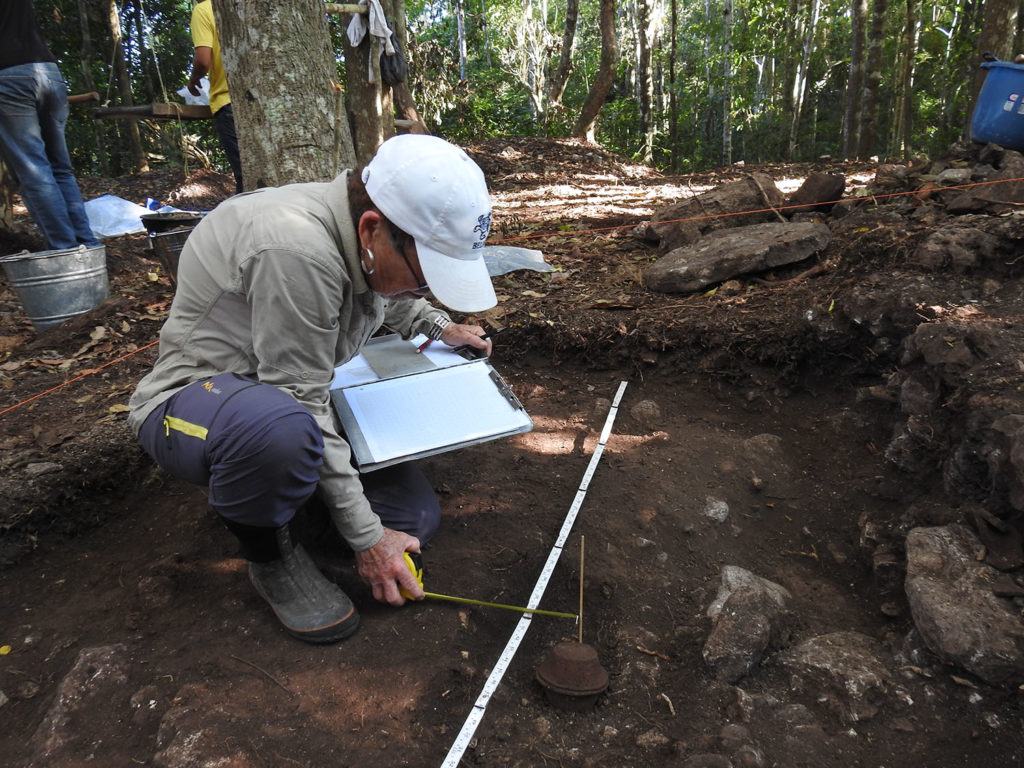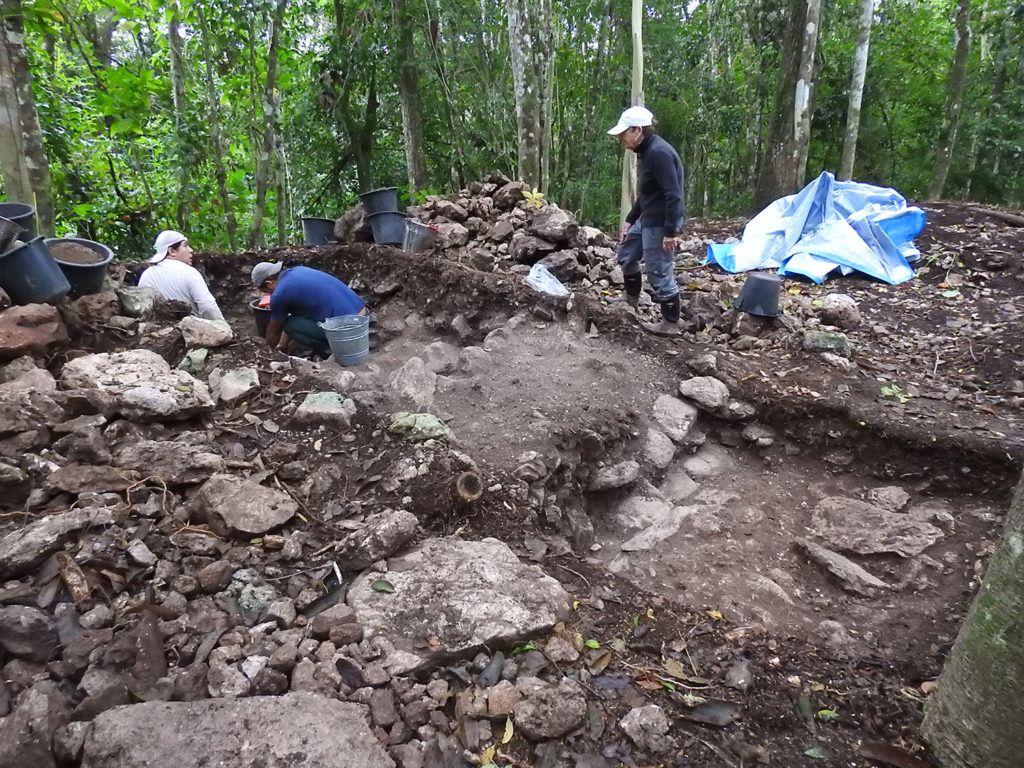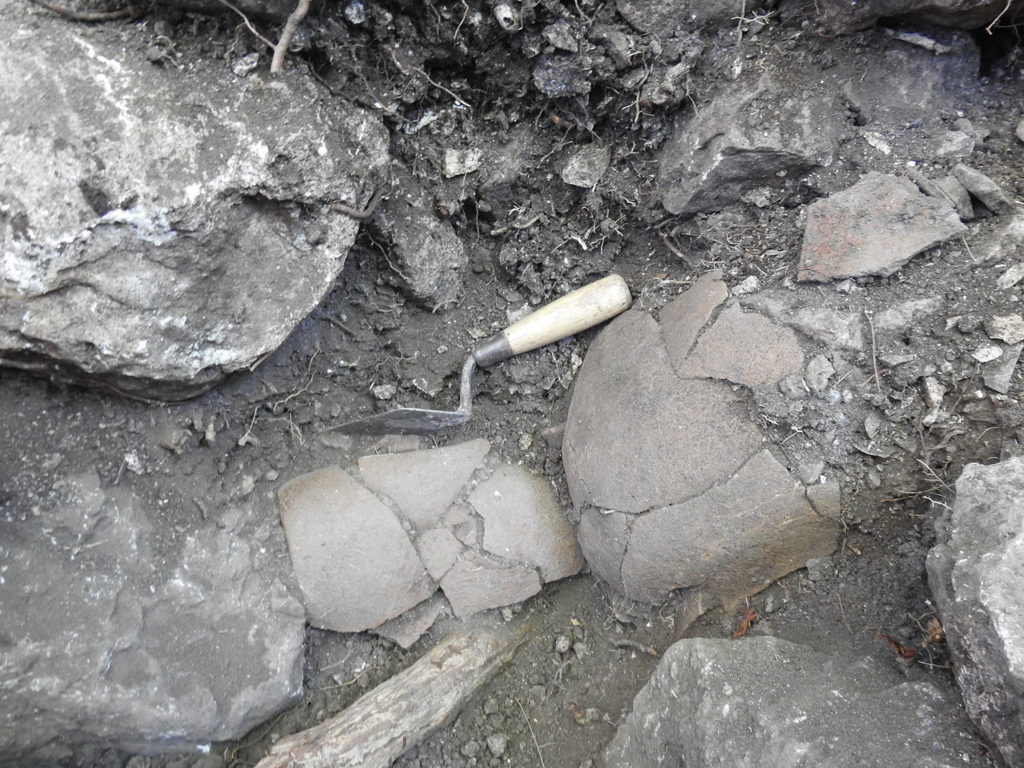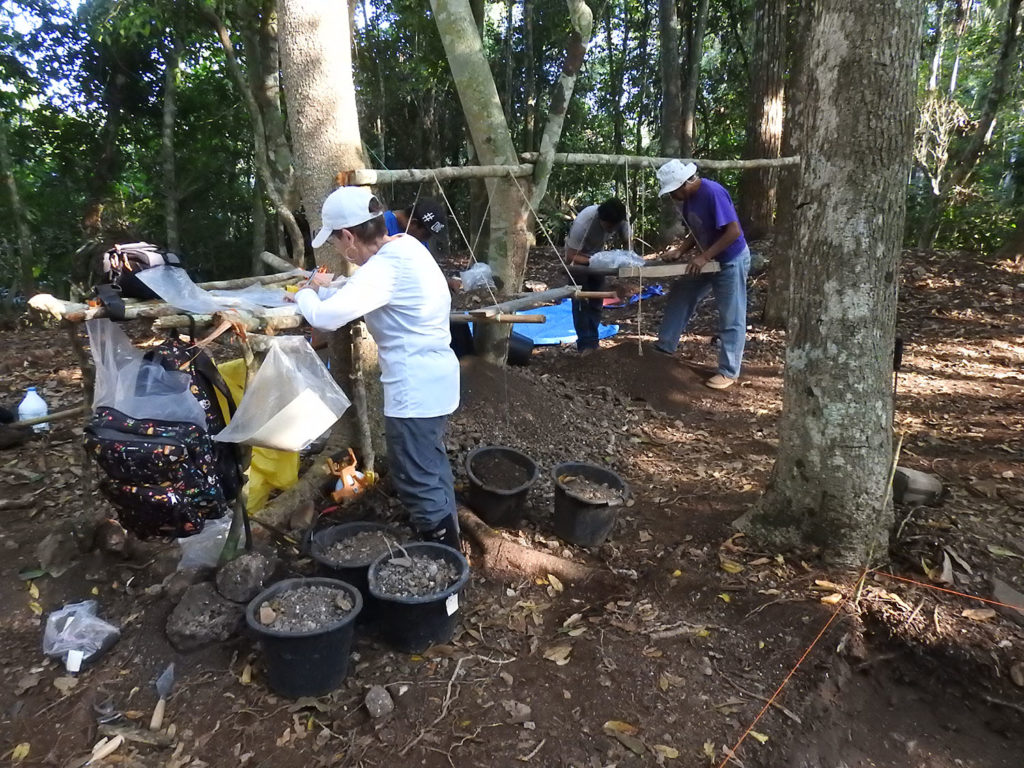We have gone past the halfway point of the field season and are now starting to think about how to close out our various excavations and to make sure that everything is finished. The weather this week compounded some of our anxieties about getting things done, especially as we had two cold fronts come through, resulting in rain all night on Wednesday and a “rain” day on Thursday where everyone washed lithics. Thursday night was 59 degrees at Caracol and everyone felt the cold.
Excavations in King Residential Group continued in full force this week and this group is essentially done except for final drawing. Mayra found two face caches this week in the front of her building. One (SD C224B-4) was completely smashed and missing part of its side; the other was inside a crude crypt made of upright stones capped with a slab; it was largely whole, except that its bottom had been burned and crumbled into a mass of pieces (SD C224B-5). Mayra also pulled a partial burial (SD C224B-6) that was in the northern middle of the structure associated with a smashed fluted cylinder. This interment appears to have been largely destroyed by an old re-entry into the chamber (SD C224B-3) in the back of the building; this is based on both the initial collapse of the flooring in this part of the building and on pieces of the cylinder being recovered from the screening associated with the dirt associated with the vessels and bones in SD C224B-3.
In Queen Residential Group excavations continued on the northern and eastern building in the southeastern corner of the plaza. The northern building (C225E) appears to have been a single phase construction that is not associated with any deposits. This contrasts with the eastern building (C225D), which now shows at least four sequent constructions. Beneath the cobble plaza to the east of the southeastern building in Queen a deep surface (flooring) and east-west alignment were found that ran beneath the later east building. Within the summit of the east building, an earlier platform that was encountered that was offset to the north and had been set upon a formal plaster floor that ran to the south. And, within this buried summit platform an even earlier offset northern facing was encountered; the deeply buried plaster floor encountered in the building summit abutted this facing. Ceramics recovered within the earlier summit platform indicate that this construction is of Late Classic date, whereas material in the core of the latest building here indicates that a Terminal Classic date.
In Jack Residential Group, the eastern and western structure both saw substantial excavation. The eastern excavation (C226B) is being taken down to bedrock across the trench. In the western building investigation (C226C), an eastern facing was encountered and a plastered plaza floor was found under the platform coring in the building interior. A bird whistle was also recovered from within the core of the western building.
Finally, in Joker, excavations continued into the core of the eastern building as well as in the plaza in front of the structure (C227B). A lip-to-lip cache was found in the plaza on axis to the structure and there are some capstones that indicate a likely burial is in the southeastern corner of the excavation. In the building itself, there was a crude cist in the front of the building that had some human bone. But, this area was covered with dry core fill and in this fill a series of partial domestic-ware vessels were found (incurved bowls of various sizes, a collared bowl, and part of a larger olla). The remains of a partial Late Classic flanged cylinder censer were also strewn over the front of the building. By week’s end, a good floor had been discovered in the building core that was higher than the plaza, implying that an earlier step should exist in the front part of the structure.
On Sunday, there was an airport run that brought Adrian into camp for the last three weeks of the field season to help with the drawing and closing things out.
